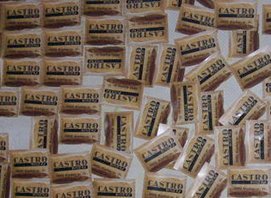 I am at a loss, and I will indignantly use you, dear friends, and your deep knowledge to bring me back to senses.
I am at a loss, and I will indignantly use you, dear friends, and your deep knowledge to bring me back to senses.I was curious, don't ask why, to know whether there was an endogenous American species of hedgehogs. I guess I wanted to check whether my intuition that children literature and animation involving hedgehogs were mainly European. It seemed to me that when it came to spikes, common representations are generally with porcupines in Disneys and Tex Averys, and with hedgehogs in our sweet old world's animated movies. Or maybe I just needed a spiky hug. Don't ask I said. Now the answer is clear:
There is no such thing as an endogenous American hedgehog.Good to know. But that is not the end of the story. I came across an article about the "American hedgehog". It says:
[...] initial imports [...] into the North American exotic animal market in 1990 [...] came from two locations in Africa, [...] Kenya and Egypt. From the outset, the still inexplicable decision to cross the Algerian and White-Bellied species was made and The "North American" hedgehog was born.Until now, nothing suprising, it is just a hybrid, right?
While this new hybrid species thrived and adapted remarkably well to captivity, sadly, the two parent species as well as the Egyptian species did not.Now THAT is what started me thinking. I could have started thinking earlier, I know, but well here I am. I never had given a thought to the fact that when a hybrid is fertile, it should imply seriously re-thinking about whether the two parent species were really distinct species in the first place, no? I know that the old definition of a species as a set of cross-fertile individuals is outdated and that some genomic-based definition is more appropriate, but, first of all I don't quite know what it is, and second, why would this genomic definition be proof to my two-parent-species-giving-birth-to-a-fertile-hybrid-were-not-distinct-species-in-the-first-place argument?
I never really understood the subtleties which I were taught that two separate populations of a parent species which got isolated and begin to grow distinct features might sometimes be considered as distinct species, sometimes only as sub-species. Does the definition of species include a statistic test of distance between two populations genomes? But then species wouldn't be constant in times, if some event were to decrease distant. Imagine the following scenario: for a reason that leaves all phenotypes and genotypes unchanged, the two parent populations of our North-American hedgehog migrate from Egypt and Kenya to a place I don't know where. They mix, mingle and you have a couple of generations later individuals from one species, the other, or hybrid. All these individuals are cross-fertile, right? How do you define species then? Do you redefine the parent species? Those individuals that first migrated, to which species do you consider they belong now? Do you have to change your theory because new individuals were born? Does it make a difference when they were born because some lonely people out there got those guys come across each other in their backyards or because the guys willingly migrated to a new place?
Ok I stop here with my stupid scenario. But hell! I won't sleep tonight. Please give a thought to my migrate-and-mingle paradox, would you please?



